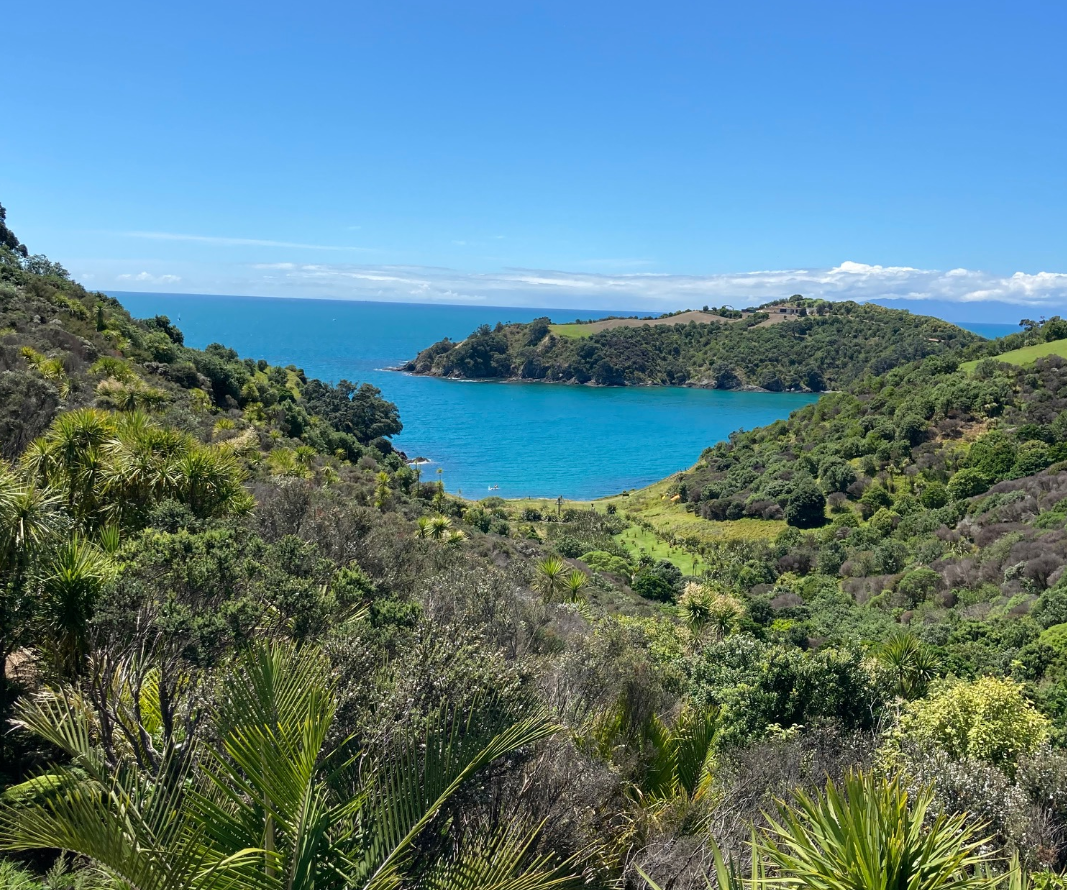Planting and Regeneration.
Planting programmes to regenerate the land and reduce sedimentary runoff.
For over a century the North Western peninsular of Waiheke was farmed, most recently by the Delamore Family from 1966 until shortly before the millennium. At this time the forward thinking developers in conjunction with landscape architects DJ Scott and Associates developed a unique plan for a park like subdivision of extensive lots where the land owners become part of the restoration and preservation of the complete environment. Twenty plus years later and a barren drought, flood & erosion prone area of farmland is now literally growing into one of the most beautiful and bird friendly northern waiheke regions one can enjoy with a public walkway that connects the Matiatia wharf, passes by the Mokemoke Pa site, runs through Owhanake Bay and to Oneroa village.
5000 plus trees per hectare were planted as part of the original development consent and since then owners continue to enhance the flora through reintroduction of native specimen trees: Kauri, Rimu, Totara, Puriri and more.

PHOTO: Owhanake Bay circa 2021 showing extensive revitalision of native plantings
It is believed Waiheke was originally clothed with coastal broadleaf podocarp forest, hosting significant kauri groves and extensive wetland areas of raupō and flax. The western end we enjoy may have lacked dense forest due to fire caused by the Rangitoto eruption and followed by Māori clearance for gardening and possibly accidental fires. The area is predominantly clay soils are of low to medium fertility and native flora has benefited from a complete absence over recent years of the dreaded possums.

PHOTO: Peninsular Circa 1996 prior to planting 5000 specimens per hectare
The island had of course not just been extensively farmed but denuded of kauri, used for ships spars and then to provide building timber for Auckland. By the late 1800s Waiheke forests had largely been removed and replaced with grassland pastures. Many coastal areas were also damaged by the removal of shingle and sand for use in construction of buildings and roads in greater Auckland. Coastal erosion from the removal of sand and shingle is a key reason for Ōwhanake Bay foreshore and of course many bays filled with soil run off from overgrazed and easily eroded farmland.
Vegetation Types:
Planting has been carried out of the following species in the proportions to the specification below, listed in paragraphs (a) and (b) below to achieve a total density of at least 5000 stems per hectare:
(a) The first part of the programme shall comprise of the planting this being done in manuka (Leptospermum scoparium) and Kanuka (Kunzea ericoides). These will be the mass plantings, provided that no more than 25% of the total mass plantings will be Kanuka.
(b) The balance of the programme, 12% will comprise of the following species in the following proportions – together called the supplementary planting:
(c) 10% of each of the following:
(d) 2% of each of the following:
(e) 1% of each of the following:
